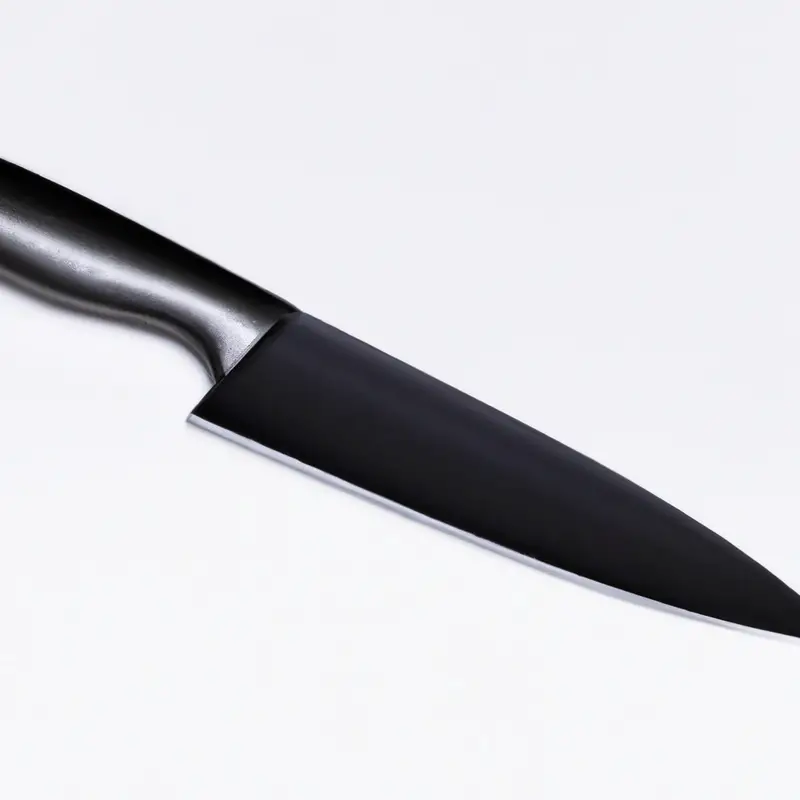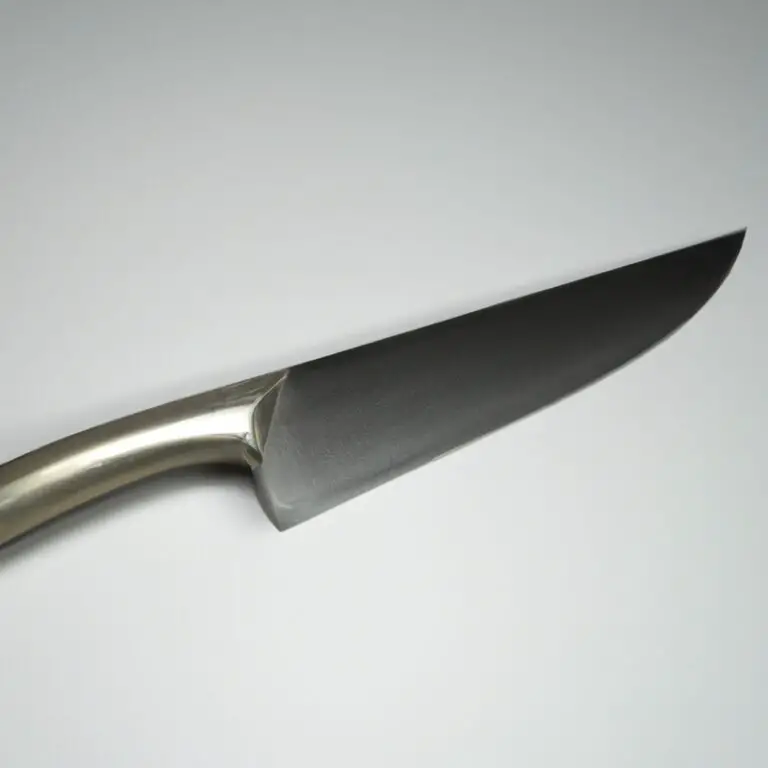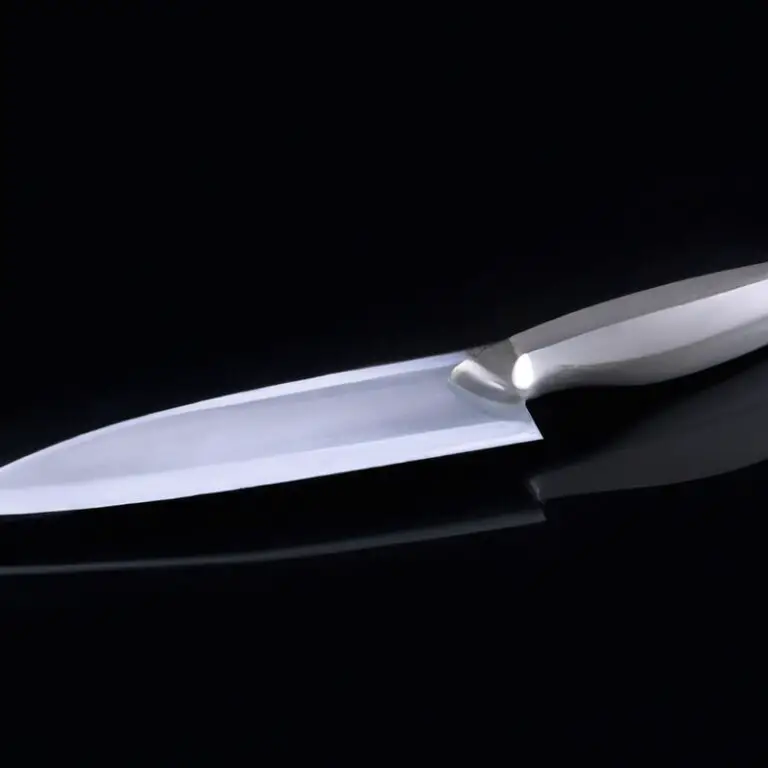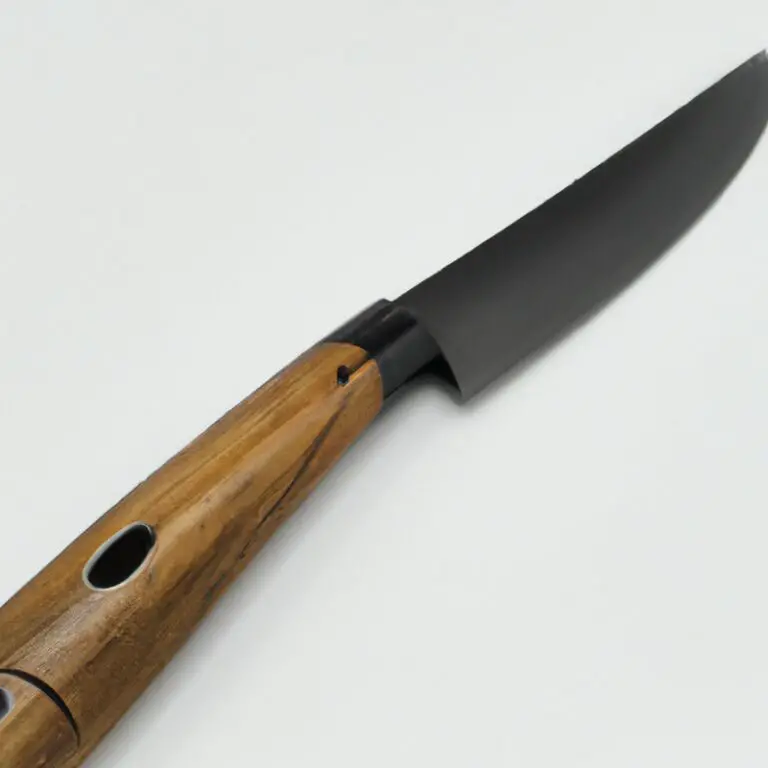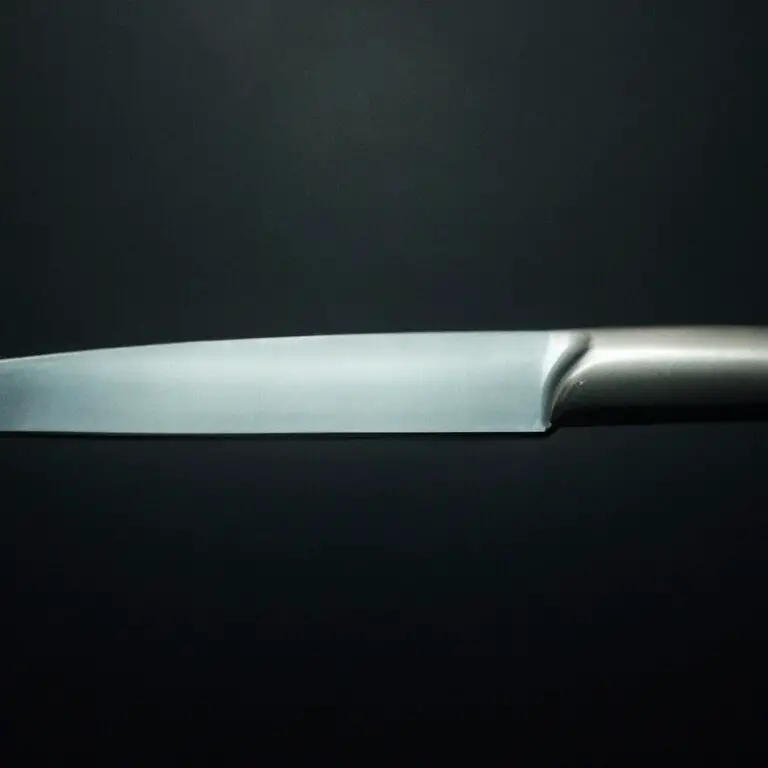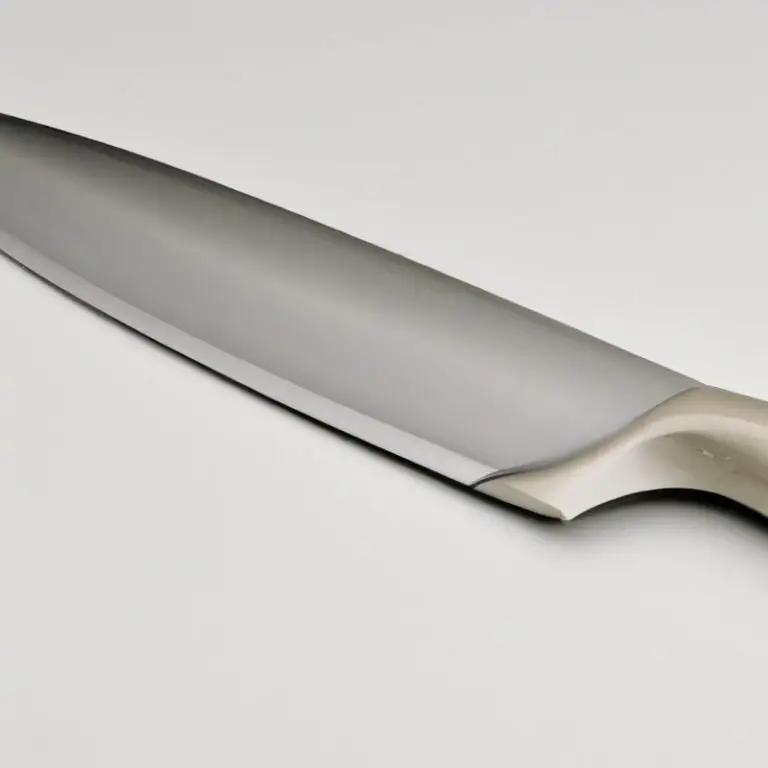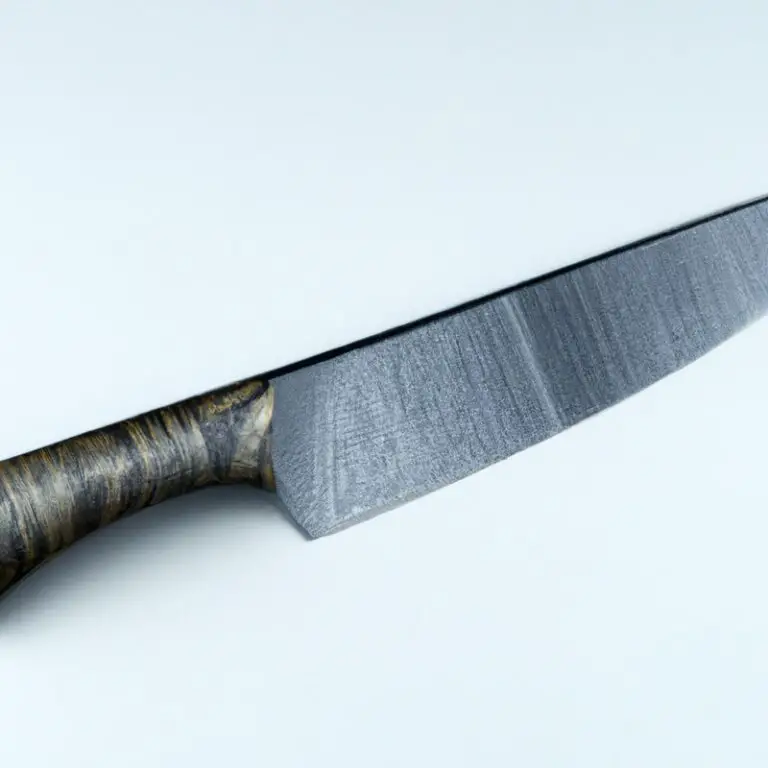How To Flatten And Level Sharpening Stones For Optimal Sharpening Of Gyuto Knives? Tips!
Key Takeaways:
- Flattening and leveling your sharpening stones is crucial for achieving optimal sharpness when sharpening Gyuto knives.
- Maintain the credibility and expertise of your sharpening process by ensuring the stones are flat and level.
- The process of flattening and leveling requires time and effort, but it’s worth it for the perfect sharpening results.
- Expert guidance and techniques can help you to ensure the best sharpening results for your Gyuto knives.
Are you tired of blunt Gyuto knives ruining your cooking experience? Look no further than the humble sharpening stone, a tool to keep your knives razor-sharp.
However, a common problem faced by home chefs and professional knife sharpeners alike is the uneven surface area of stones, rendering their sharpening ability a waste.
In this article, I will guide you on the importance of a flat sharpening stone and the necessary tools for effective flattening and leveling. Keep your knives at their prime with these simple and easy tips.
| Description | Method | Tools Required | |
| 1 | Identify high points and low points of the sharpening stone surface. | Visual inspection and rubbing with a hand. | None. |
| 2 | Apply marking compound on the surface of the stone. | Apply a small amount of marking compound on the stone surface. | Marking compound (e.g. chalk or dry erase marker). |
| 3 | Use a flattening stone or flattening plate to grind or shave off the high points of the sharpening stone surface. | Place flattening stone or plate on top of the sharpening stone surface and move it in circles, or move sharpening stone against flattening stone or plate in straight lines. | Flattening stone or plate (e.g. diamond, ceramic, or abrasive). |
| 4 | Repeat the previous step until all high points are removed and the surface is evenly marked by the compound. | Inspect surface and repeat step 3 as needed. | Flattening stone or plate, marking compound. |
| 5 | Use a leveling stone or sandpaper to remove the scratches left by the flattening stone or plate. | Place leveling stone or sandpaper on the surface and move it in circles, or move sharpening stone against leveling stone or sandpaper in straight lines. | Leveling stone or sandpaper (e.g. 1000 or 2000 grit). |
| 6 | Remove marks left by the compound and leveling stone/sandpaper by cleaning the surface with water and a sponge or cloth. | Use water and a sponge or cloth to remove excess compound and loose particles. | Water, sponge or cloth. |
| 7 | Inspect the surface to verify it is flat and clean. | Visual inspection and rubbing with a hand. | None. |
Understanding the importance of flat sharpening stones
Flat sharpening stones are crucial for achieving optimal sharpening results on your Gyuto knives. The flat surface of the stone allows for consistent and even sharpening of the blade, resulting in a razor-sharp edge.
Without a flat surface, the sharpening angle will be inconsistent, leading to an uneven edge and potentially damaging your knife.
Regularly flattening and leveling your sharpening stone will ensure consistent results and prolong the life of your knife. Using a warping or uneven stone can also lead to costly mistakes, resulting in the need for more extensive knife repairs.
Therefore, it is essential to prioritize using flat sharpening stones for safe and effective sharpening of your Gyuto knives.
Necessary tools for flattening and leveling sharpening stones
Necessary tools for flattening and leveling sharpening stones include:
- Flattening Stone: This tool is used to level the surface of your sharpening stone. A good flattening stone should be made of abrasive material that can effectively remove the high spots on the stone.
- Diamond Plate: Diamond plates are used to flatten waterstones and oil stones. They are coated with diamond abrasive material and can remove the metal quickly, making them effective for shaping and repairing your sharpening stone.
- Sandpaper: Sandpaper is another tool for flattening sharpening stones. It’s affordable and widely available. Higher grit sandpaper can be used for fine-tuning and polishing the stone.
- Honing Guide: A honing guide keeps your blade at the correct angle while sharpening. This tool ensures that the sharpening angle remains consistent and can be used to level your sharpening stone by running it across the surface of the stone.
- Scrubbing Pad: Scrubbing pads are used to remove the metal shavings and debris from the sharpening stone. They are also effective in roughing up the surface of the stone before flattening.
- Straight Edge: A straight edge is essential in checking the flatness of your sharpening stone. It’s used to determine whether the stone surface is level or has high and low spots.
Having these tools on hand will make the process of flattening and leveling your sharpening stone easier and more efficient.
Preparing the stone surface for flattening
Before flattening and leveling your sharpening stones, you need to prepare the surface to ensure a smooth and effective process. Begin by removing any debris or sediment on the stone surface using a nylon brush or scraper.
Then, soak your waterstones for the recommended time to ensure they are fully saturated before flattening.
For oil stones, apply a thin layer of mineral oil or honing oil to the entire surface to increase lubrication and prevent clogging during flattening. To protect your work surface, lay down a non-slip mat or towel to prevent slipping or movement.
You can also use sandpaper or Truing Stones to level your sharpening stones.
Make sure to follow the manufacturer’s instructions for safe and effective use of the flattening tool. Once the stone surface is properly prepared, proceed with flattening using the appropriate method for your sharpening stone.
A well-prepared surface will result in a more efficient and effective flattening process, leading to a better sharpening result for your Gyuto knives.
How to flatten waterstones effectively
To flatten a waterstone, you will need a flattening plate or a diamond lapping plate. First, wet the flattening plate or lapping plate with water.
Then, place it on a flat, stable surface.
Next, take the waterstone and rub it back and forth in a circular motion on the flattening plate. Be sure to apply even pressure and cover the entire surface of the stone.
After a few minutes, remove the waterstone and inspect it for flatness.
Look for any high spots or low spots on the stone surface. If necessary, continue flattening until the stone is completely flat.
You can check the flatness of your waterstone using a straight edge or by placing it on a flat surface and checking for wobbling.
It is important to note that proper maintenance of your waterstone is essential to keep it flat. After each use, clean the stone thoroughly and dry it completely before storing it.
Avoid dropping the stone or exposing it to extreme temperatures as this can cause warping.
By following these tips and flattening your waterstone regularly, you can ensure optimal sharpening results for your Gyuto knives.
How to level oil sharpening stones
To level oil sharpening stones, you need to follow a few simple steps:
- Start with a clean stone: Wipe the surface of the stone clean with a rag or paper towel to remove any residual oil and debris.
- Use a flattening plate: Place a flattening plate on a flat surface, and then add a small amount of oil to the plate’s surface. Next, rub the oil stone back and forth on the flattening plate.
- Check the Stone: Keep checking the stone to see if it’s flat. Once it appears to be flat, wipe the stone surface clean by turning the stone around.
- Repeat the process: Repeat the same process a couple of times, depending on the shape of the stone.
- Clean the Stone: Finally, clean the oil stone thoroughly to remove any pieces of debris or metal that might have accumulated on the surface.
If your sharpening stone is not levelled correctly, it will affect the accuracy and quality of your knife sharpening results. Therefore, by following the above steps, you will help ensure your stones provide the best possible results over an extended period.
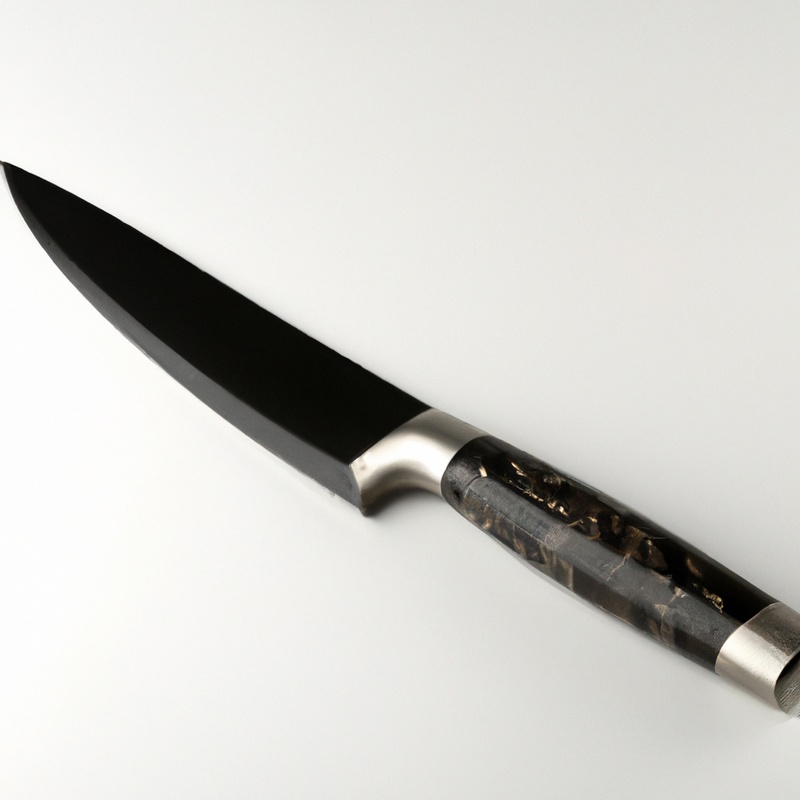
Tips for keeping the stone flat during use
Keeping the sharpening stone flat during use is crucial to ensure optimal results when sharpening Gyuto knives. Here are some tips to consider:
- Use a stable sharpening surface: A stable surface will prevent the sharpening stone from sliding or moving around during use, ensuring consistency in the sharpening process.
- Apply even pressure: Uneven pressure can cause the sharpening stone to wear unevenly, resulting in an uneven surface. Apply even pressure throughout the sharpening process.
- Clean the surface regularly: Small metal fragments or debris can accumulate on the surface of the sharpening stone, causing inconsistencies. Clean the surface regularly to avoid this.
- Store the sharpening stone properly: Avoid stacking or piling other objects on top of the sharpening stone, which can cause it to warp.
- Consider using a honing guide: A honing guide can help maintain the angle and pressure of the knife against the sharpening stone, facilitating a consistent sharpening process.
Keeping the sharpening stone flat during use requires attention to detail, but it is essential to achieving optimal results when sharpening Gyuto knives.
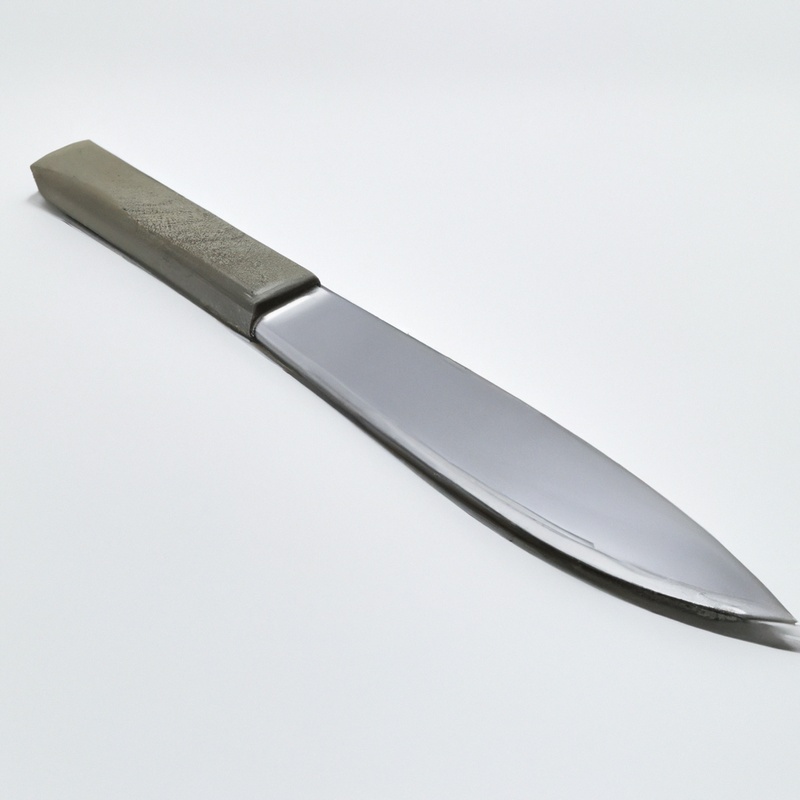
How often to flatten and level sharpening stones
It is recommended to flatten and level sharpening stones after every use. If you use your sharpening stone less frequently, you can check the flatness with a straight edge or utilize a level test before each use, but only flatten as necessary.
By keeping your sharpening stone flat, you ensure optimal results with each use, minimizing the amount of material that needs to be removed during sharpening.
It also ensures the edge of the knife is even and maintained correctly. Remember, using a concave or convex sharpening stone could lead to the overuse of one side of the blade while not effectively sharpening the other side.
Flattening and leveling your sharpening stone regularly maximizes the longevity of both your sharpening stone and knives.
Common mistakes to avoid when flattening stones
To ensure that you effectively flatten your sharpening stones, there are a few common mistakes you should avoid. These include:
- Applying too much pressure: While flattening your sharpening stone, avoid pressing down too hard on the stone as this may deform it.
- Using a worn-out flattening plate: If you are using a flattening plate, make sure it is in good condition. Otherwise, it may not flatten the stone effectively.
- Not using enough water: When flattening waterstones, ensure that you use enough water to prevent the stone from clogging up with metal shavings.
- Poor technique: Using poor technique while flattening the stone can result in an uneven surface. Ensure that you follow the correct procedure.
- Not checking for flatness: Failing to check that the stone is flat may lead to poor knife sharpening performance.
By avoiding these common mistakes, you will be able to flatten your sharpening stones effectively and achieve optimal sharpening results.
Testing the flatness of your sharpening stone
Testing the flatness of your sharpening stone is crucial to ensure it will provide the best sharpening results for your Gyuto knife. A simple way to test your stone is by taking a ruler or straight edge and placing it diagonally across the stone’s surface.
Check if the ruler rocks or if there are any gaps between the ruler and the stone.
This will indicate any high or low spots on the stone’s surface. Another method is to use a flatness gauge, which is a tool specifically designed to test the flatness of sharpening stones.
A flatness gauge consists of a metal or glass plate with a narrow slit in the center.
Place the gauge onto the stone, and use a flashlight to see if there is any light passing through the slit. If the light passes through, it indicates that there is a gap between the stone and the gauge, indicating a high or low spot on the stone’s surface.
It is essential to check the stone’s flatness regularly, as frequent use can cause the stone to become uneven.
Flattening stones will prolong their lifespan and ensure you can achieve the sharpest edge on your Gyuto knife. Remember to keep your stone clean and dry for optimal performance.
Other methods for maintaining flat sharpening stones
Apart from using diamond plates and sandpaper, there are other ways to maintain the flatness of sharpening stones. One of the popular methods is using a lapping plate, which is a flat metal plate coated with diamond or silicon carbide abrasive.
The plate is used just like a diamond plate to flatten the stone surface.
Another method is using a leveling stone. These stones are designed to level the sharpening stone by removing high spots rather than flattening the entire surface.
They come in various shapes and sizes to fit different types of sharpening stones.
Lastly, some manufacturers offer flattening and leveling solutions that can be applied directly to the stone surface. These solutions contain abrasives that remove high spots and maintain flatness.
They are easy to use and eliminate the mess created by other methods.
It’s essential to research and choose a method that is compatible with your sharpening stone and fits your budget. Also, it’s crucial to follow the instructions carefully to avoid damaging the stone surface.
Overall, using other methods to maintain the flatness of sharpening stones requires careful consideration and attention to detail.
But, it’s worth the effort as it enables optimal sharpening of Gyuto knives.
Final Verdict
Maintaining a flat sharpening stone is crucial to achieving optimal sharpening results for your Gyuto knives. By taking the time to flatten and level your stone regularly, you can ensure a consistent and reliable sharpening experience.
Remember to use the necessary tools, prepare the stone surface correctly, and implement tips for keeping the stone flat during use.
Testing the flatness of your sharpening stone is also important to ensure accuracy. By avoiding common mistakes and utilizing other methods for maintaining a flat stone, you can prolong the lifespan of your sharpening stone and achieve the best possible sharpening outcomes.
With these practices in place, you can trust that your sharpening process will be efficient, effective, and rewarding.

